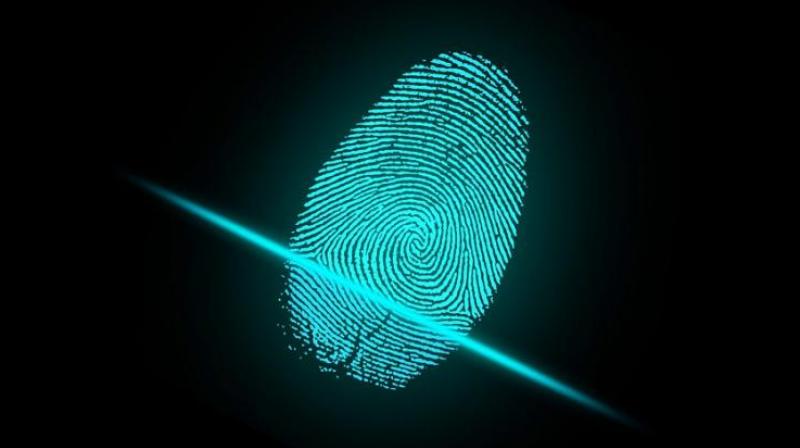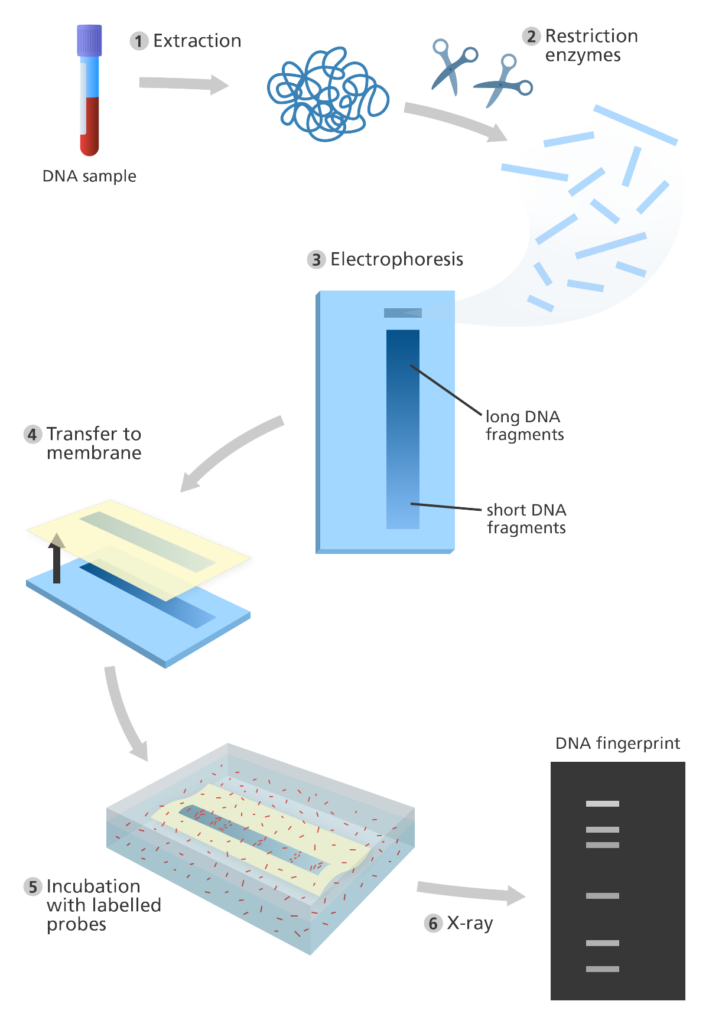DNA fingerprinting is the laboratory technique often used in order to develop a link between a particular suspect of a criminal investigation and the biological evidence. DNA fingerprinting was firstly developed by Alec Jeffreys in 1985. He is the first person who shaded light on that every person has their own specific DNA which can match with their close biological relative but cannot be exact same among the two persons.
Two persons can have 99.9% identical portion in their DNA where the rest 0.1% brings the differences between these two people. If the DNA sample which is collected from the crime scene, is matched with the DNA sample of the suspect then it can be assumed that the evidence which is gathered is belongings of him or he touched this.
Similarly, if the two DNA samples are not matched then it can be detected that the evidence is not belongs to him or was touched by him. However, DNA is too utilized in building up paternity as it is also used to perform the paternity test. If DNA sample of one person is matched with the other then it is proved that they are biologically relative like father son, mother daughter, father daughter, mother son and siblings.

DNA profiling
DNA profiling is a very sensitive technique which usually needs a few skin cells, a hair root and a tiny amount of blood cells or saliva. There are sections or Loci where DNA is consisting with it’s three, four or five bases and are repeated many times.
Techniques of DNA fingerprinting collection for crime investigation
Step-1: Collection of DNA sample from the suspect body.
Step-2: Isolation of DNA from black stain/ smear stain/ hair roots of victim’s cloth
Step-3: Digestion of DNA with suitable RE.
Step-4: Gel electrophoresis of digested DNA fragment.
Step-5: Blotting or Hybridization of DNA into nitrocellulose membrane (E.M. Southern to Southern hybridization)
Step-6: Preparation of radioactive DNA probes by labeling with radioactive isotopes.
Step-7: Hybridization of DNA of nitro cellulose membrane with the radioactive probes.
Step-8: Detection of DNA bands with the probes by auto radiography.
By these eight steps DNA fingerprinting is collected.

Clinical implementation of DNA fingerprinting
Though the major utilization of DNA fingerprinting is in the investigation of crime cases, but some other clinical applications are also done by analyzing it. The procedures, which are used for DNA testing in forensic departments, are also required for the assessment of “hematopoietic engraftment” donors after the transplantation of bone marrow and the analysis of chimerism in the case of transplantation of solid organ.
Apart from that, DNA identification testing or DNA fingerprinting are utilized for assuring the hydatidiform diagnosis as well as solving the challenges of recognition of specimen in the context of specimen misidentification or mislabeling. Besides that, DNA fingerprinting test also uses to make the evaluation of the case of tumor transmission which happens after the transplantation. Consequently, thus can be determined under the clinical observation as if the donor have the tendency of malignancy else if recipient origin.
Basic two methods of clinical DNA fingerprinting testing
“VNTR” and “STR” are very important methods for this testing as they have the polymorphic property as well as they usually are inherited within a “mendelian fashion”. These two methods are used for clinical utilization in organ transplantation cases.
Other applications of DNA finger printings
DNA fingerprinting is also utilized to determine the closeness populations and species which are transformed to other species as well as populations in the case of animal populations and plant. By doing this method, DNA finger printings keep tracking speediness of them over the time.
Therefore, it has clarified that DNA fingerprinting is a very useful technique which is mainly used for the investigation of criminal cases but also it has more other applications.















































